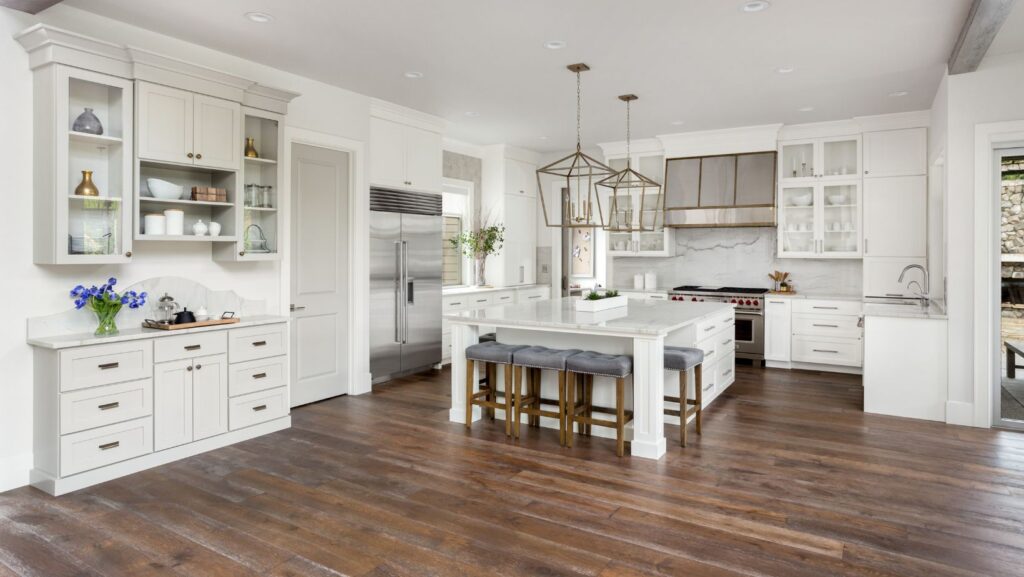In interior design, minimalist and neutral colour schemes have dominated the scene for quite some time. However, a new trend is emerging, offering a bolder approach: Colour Drenching. This technique involves using a single colour in varying shades throughout a room to create a cohesive and impactful visual experience.
What is Colour Drenching?
This is an interior design technique that uses a single colour or closely related hues throughout a space. This means painting the walls, ceiling, trim and sometimes even the furniture in shades of the same colour. The result is an immersive environment where the chosen colour envelopes the room, creating a striking and memorable aesthetic.
Unlike traditional colour schemes, which often rely on contrasting colours to add interest, colour drenching creates a seamless and unified look. This technique can be used with any colour, from calming pastels to bold primaries.
Benefits of Colour Drenching
Colour drenching is perfect for those who want to make a statement with their interior design. By using a single colour throughout a room, you can create a visually impactful space that stands out from traditional design schemes. Whether it’s a deep emerald green or a soft blush pink, the saturation of colour adds a unique personality to the room.
Colours have a profound effect on our emotions and mood. Colour drenching then allows you to harness the psychological impact of colours to create a specific atmosphere in a room. For example, deep blues can create a calming and serene environment, while vibrant reds can energise and stimulate.

Using a single colour in varying shades helps unify different elements of a room, which creates a harmonious look. This can be particularly beneficial in open-plan spaces or rooms with architectural quirks. Colour drenching can smooth out visual distractions and make your space feel more cohesive by enveloping the room in colour.
This technique can also highlight architectural features in a room. For instance, painting mouldings, fireplaces or built-in shelves in the same colour as the walls can make these elements stand out subtly. Alternatively, contrasting shades can be used within the same colour family to accentuate these features further.
How to Achieve Colour Drenching
Start by choosing a colour that resonates with your style and the mood you want to create. Consider the room’s purpose and the natural light it receives. For example, lighter shades can make a small room feel larger, while darker hues can add cosiness to larger spaces.
Once you’ve chosen your base colour, explore its various shades and finishes. Combining matte and glossy finishes can add depth and interest to the room. For instance, you could use a lacquered finish for your floor or a matte finish on the walls with a semi-gloss finish on the trim to subtly differentiate these elements.
To fully embrace the colour drenching technique, incorporate the chosen colour into your furniture and accessories. This doesn’t mean everything has to be the exact same colour; but you should stick to the same colour family. Use pillows, rugs, curtains and artwork to enhance the drenching effect, while adding texture and pattern to keep the space dynamic.
Use warm lighting to enhance the richness of the colour or cool lighting to bring out its cooler tones. Consider sing lamps, pendant lights or wall sconces to highlight specific areas and add layers to the room’s lighting scheme.

Adding textures is also essential when working with a single colour palette. Incorporate different materials such as velvet, linen, wood or metal to add dimension and interest to the space. Texture can prevent the room from feeling flat and monotonous, ensuring a well-balanced design.
Tips for Successful Colour Drenching
Always test your chosen colour in the room before committing. Colours can look different depending on the lighting and time of day, so it’s essential to see how it behaves in the actual space.
If you’re hesitant about going all-in with one colour, balance it with neutrals like white, grey or beige. This can help tone down the intensity and provide visual relief. Think about how flooring can serve as a neutral colour, whether you include it in your colour drenching or not, there’s plenty of natural variation in real wood to help you create a sense of connection and cohesion.
When using colour drenching in one room, consider how it will flow into adjacent spaces. Ensure the transition between rooms is smooth by choosing complementary colours or using colour drenching in connecting areas.


